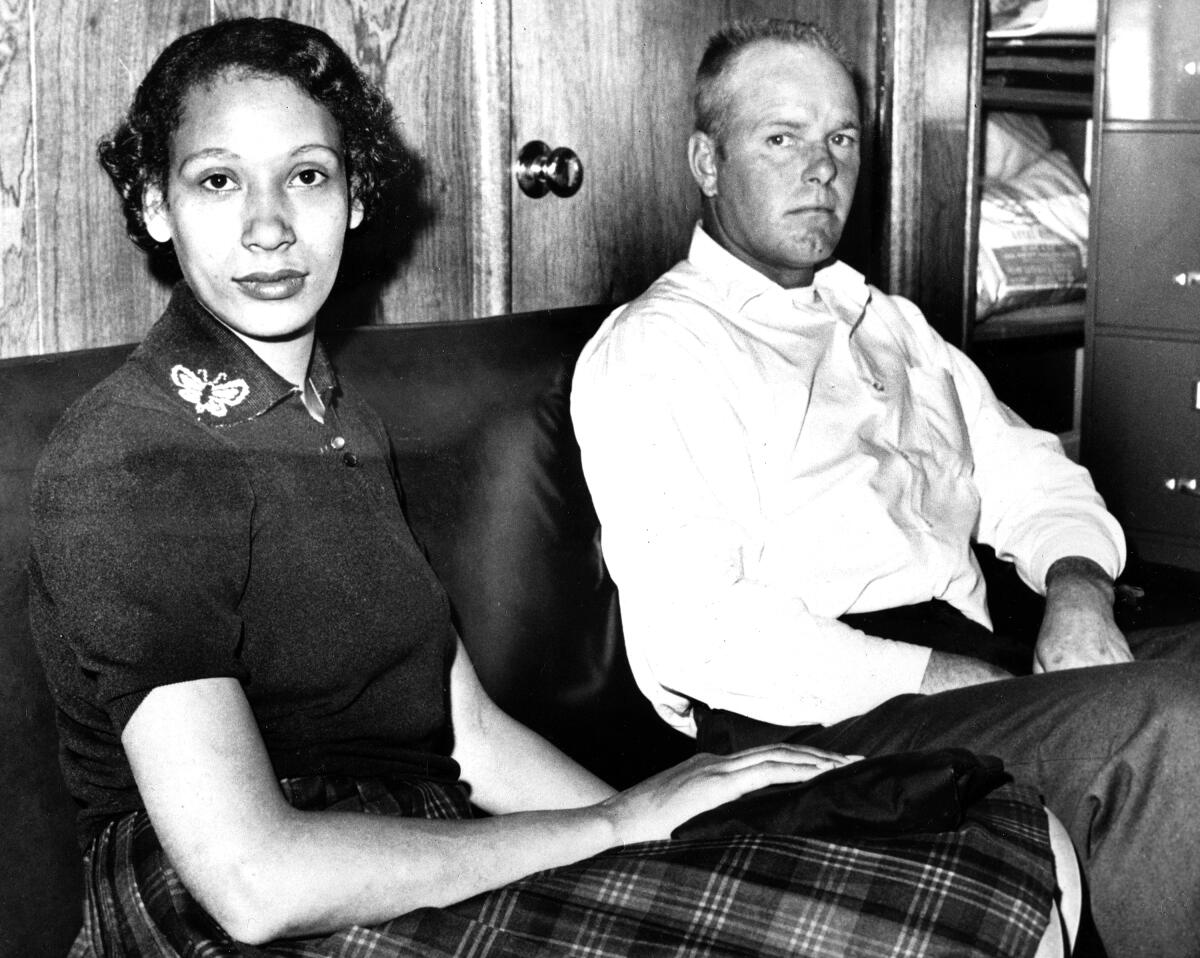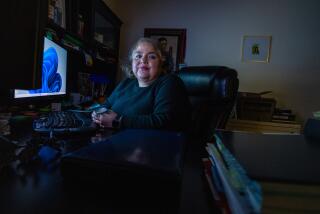Op-Ed: Love is love is love: How two Supreme Court decisions changed my life

- Share via
After three years of marriage, my writer husband, Julius Lester, and I had worked out a good arrangement: He wrote in our grimy New York apartment, taught a few guitar students and cared for baby Rosa while I attended City College graduate school. My fellowship funded it all.
But late one January night he stood in our kitchen, stirring diapers boiling on the stove, and told me he’d decided to move south. He wanted to be a cultural worker for the Student Non-Violent Coordinating Committee. I looked at him in disbelief.
“We said we’d never be apart,” I told him while I rocked Rosa, asleep in her carriage.
When he said he had to go, I responded, “Take me with you.” Our baby could come too. But he said he couldn’t take a white wife; it was too dangerous. We might be arrested or killed. For him, the South was home. I would be a tourist. He said it was his revolutionary duty. “I’m called to go,” he said. “By myself.” Two days later he picked up his suitcase, hugged me and walked out the door.
For the next two years, except for brief visits home, Julius remained in shoot-on-sight Mississippi, where, if we were seen together, our lives wouldn’t be worth a nickel. Our marriage wouldn’t protect us. When Julius and I were married in New York in 1962, Mississippi and 20 other states still outlawed interracial marriage. No way could I accompany my Black husband to the South.
But a legal case working its way through the courts gave me hope: Loving vs. Virginia contested the state of Virginia’s Racial Integrity Act, criminalizing sex or marriage between “white” and “colored” people.
The plaintiffs, Mildred Jeter Loving and Richard Loving — childhood sweethearts described as a Black woman and a white man — had traveled in 1958 to Washington, D.C., where they married. Upon their return to Virginia, a sheriff burst into their bedroom at 2 a.m. and reportedly asked Richard, “What are you doing in bed with that woman?”
“I’m his wife,” Mildred protested, and when Richard pointed to their marriage license on the wall, the sheriff told them, “That’s not good here,” the couple often recounted. They were taken to jail.
After pleading guilty to violating the Virginia law, their one-year prison sentences were suspended on the condition they leave the state. At Mildred’s insistence, they filed a class-action suit in a U.S. District Court in Virginia but lost when the judge ruled that when God created the races “he placed them on separate continents,” demonstrating his segregationist intent.
In 1964, Mildred wrote to Robert F. Kennedy, then U.S. attorney general, and asked for help. She was referred to the ACLU, which took on the case. When the Lovings’ lawyers asked Richard what message he wanted to send the U.S. Supreme Court, he said, “Tell the court I love my wife.”
On June 12, 1967, nine years after the Lovings’ arrest, the Supreme Court ruled that state bans on interracial marriage were unconstitutional. Mildred and Richard, with their three children, could return to Virginia, the state they both called home.
When I heard the news on my kitchen radio, I yelled, “Yes!” startling Rosa, asleep on my lap, bulging with a second child. “Baby,” I whispered to my daughter, “we just became legal.”
I thought this meant we could join Julius in the South, but on the phone that night he remained frightened by that prospect.
Considering how many murdered civil rights workers we knew, I had to agree that his fear was real. I never did join him in Mississippi, and our marriage eventually collapsed. Decades later, I found myself rooting for marriage equality of a different sort. By then I had been committed for 25 years to a wonderful woman, another civil rights advocate, Carole Johnson.
While closely following the same-sex marriage debate, we read Mildred Loving’s statement, released June 15, 2007, in honor of the 40th anniversary of the decision, which said in part: “Not a day goes by that I don’t think of Richard and our love, our right to marry, and how much it meant to me to have that freedom to marry the person precious to me, even if others thought he was the ‘wrong kind of person’ for me to marry. I believe all Americans, no matter their race, no matter their sex, no matter their sexual orientation, should have that same freedom to marry. ... That’s what Loving, and loving, are all about.”
Carole and I shouted, “Yes!” just as I had so many years before. Once more I felt hopeful that the courts would validate my love and allow me to marry — and we did during a brief legal window in California in 2008. Seven years later, Carole and I clasped hands as we watched the news on June 26, 2015. When Justice Anthony M. Kennedy delivered the historic 5-4 Supreme Court majority opinion on marriage equality, we wept with relief.
Our marriage would be nationally recognized. We could file joint federal tax returns and enjoy so many other legal rights. The Supreme Court decision had repeatedly cited the Loving decision as establishing constitutional protection for the right to marry.
Every June 12, I pay homage to the bravery of Mildred and Richard Loving, who, by insisting on their right to love, opened doors for millions of others, far beyond what any of us imagined then. This year, as Carole and I celebrate our 40th anniversary as a couple, we honor those who paved the way for our joy — especially the Lovings, whose emblematic name blazed a message to the world: Love is love is love.
Joan Steinau Lester is the author of six books, including the memoir “Loving Before Loving: A Marriage in Black and White.”
More to Read
A cure for the common opinion
Get thought-provoking perspectives with our weekly newsletter.
You may occasionally receive promotional content from the Los Angeles Times.










